I'm an interior designer. Here are 10 of my favorite tricks to make a space look bigger.
Tyka Pryde Edwards

- As an interior designer, I've mastered ways to make even the smallest spaces feel grand and open.
- People often make rookie mistakes, like hanging curtains too low and getting a rug that's too small.
Use large artwork to create an illusion of grandeur.
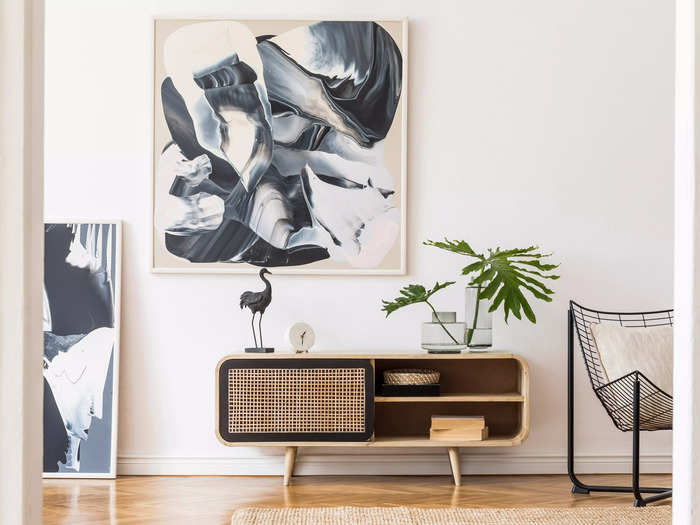
When your artwork is large, it draws the eye upward and outward.
Adding a sizable piece to your wall creates the illusion of depth, especially if it's a beautiful snapshot or landscape painting that resembles a view you might see out of a window.
Think of it as a statement piece that doubles as the room's focal point.
When you're working with a small space, it's important to choose a piece that packs a punch. You want to make sure it's the star of the show, so keep the surrounding decor minimal and let the art speak for itself.
If you're not sure where to hang it, place it on a wall opposite the entrance. That way, when someone walks into your space, they'll be wowed by the piece and forget all about how small your space is.
Mirrors are the most effective way to trick the eye and open up a room.
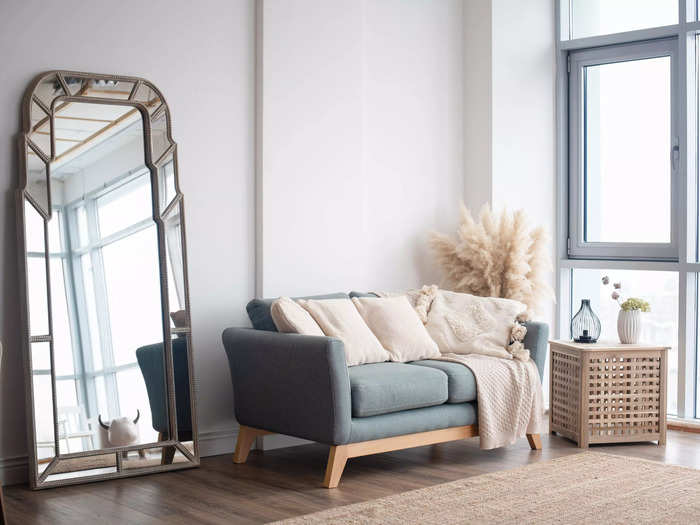
Think of mirrors as a magical portal to another dimension, one where space is infinite and your living room is the size of a ballroom.
They give the illusion of continuity and are one of the most powerful tools for tricking the eye.
When placed in the proper spot, they have the ability to reflect the surrounding space, making it seem like a room extends beyond its actual boundaries. This optical illusion makes your small space feel more open and vast.
It's important to strategically place mirrors in areas where they'll bounce light around the room. I recommend hanging yours directly across from a window or perpendicular to a window for the most effective outcome.
When choosing paint shades for a small space, look for colors with an LRV of 50 or higher.

Light Reflective Value measures how much light a paint color reflects on a scale of zero to 100. This value is important when considering how a paint color will influence a room's mood, atmosphere, and perceived size.
Paint colors with a higher LRV reflect more light, which can make a room feel brighter and more open. And when a room feels brighter and more open, it automatically feels larger.
When choosing paint colors for a small space, look for colors with an LRV of 50 or higher. White is a classic choice for tight quarters because it has a high LRV, but not all white paint is created equally. Two shades that look nearly identical can have different LRVs.
You also don't have to stick to white to get a light, airy feel. Light pastels, soft neutrals, and even some mid-tone colors can have high LRVs.
Just be sure to check a color's LRV before you buy it to ensure that it'll reflect enough light to make your space feel larger.
Floor-to-ceiling curtains make your walls look much taller.
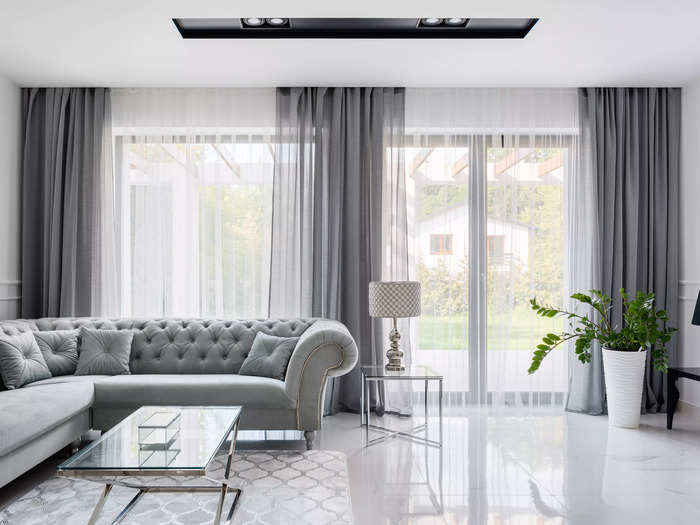
Hanging curtains right above a window is a common design mistake I've seen many rookies make. It breaks up the wall space, creating a visual barrier that shortens the distance between the ceiling and the floor.
It's like taking a pair of scissors and snipping down your room's height, which isn't exactly going to make it feel more spacious.
Instead, hang your curtains as high as you possibly can. Floor-to-ceiling curtains make your windows look larger and your walls look longer. It's like putting a pair of stilettos on your room.
Take advantage of vertical real estate for all of your small-space storage needs.

Anyone living in a small apartment or home can attest that storage can be a big issue. Every inch of space counts. But fear not — the solution to your storage woes is right above your head. You just need to embrace the power of shelves and cabinets.
Using closed, wall-mounted cabinets for storage frees up valuable floor space, making your home feel more organized and spacious. Not to mention, it'll also feel less cluttered.
Closed storage allows you to keep your not-so-pretty items, like old tax documents, out of sight but easily accessible.
Translucent furniture maximizes space without sacrificing style.
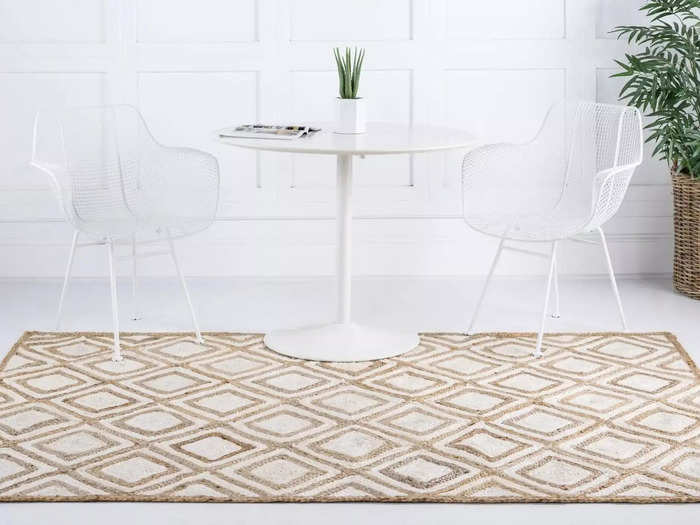
Unlike bulky wooden furniture — which can make a space feel heavy, cramped, and cluttered — translucent furniture allows the eye to travel through it, creating an unobstructed view of a room.
Translucent furniture creates a sense of spaciousness and depth that can make even the smallest room feel larger and more open.
Let's not forget that these pieces let in more light as well, brightening your room and making it feel more inviting.
From acrylic chairs to glass coffee tables to lucite bookcases, these items are both stylish and functional.
As an added bonus, they're often lightweight and easy to move around, making them perfect for renters or anyone who likes to frequently switch up their decor.
A rug that doesn't fit your space can make your room look smaller, too.
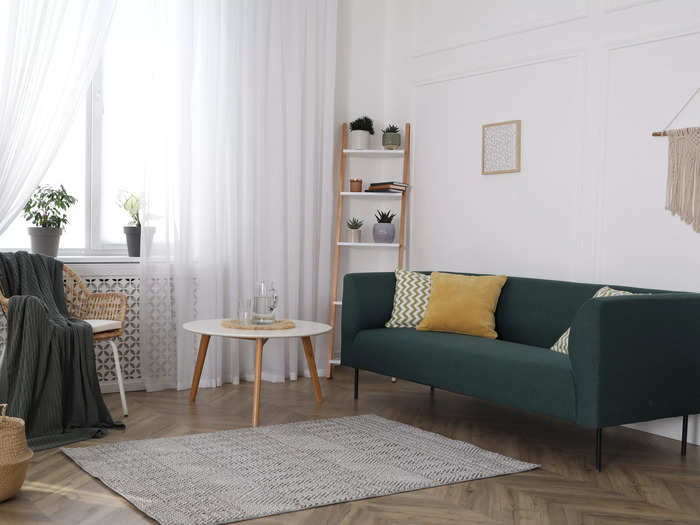
Rugs can make or break a room. Unfortunately, one of the most common mistakes people make when it comes to rugs is choosing one that's too small for their space.
It can be tempting to go for a smaller rug. After all, they're often cheaper and easier to find.
However, a rug that's too small will create an awkward negative space around the edges of the room, drawing the eye inwards and making the room feel cramped and unbalanced.
A rug that's large enough for your space creates a sense of harmony and balance, pulling the eye outward and making the room feel more spacious.
There are plenty of options, from natural jute rugs to low-pile wool rugs, that can give you the look and feel you're after without breaking the bank.
Painting your ceiling and walls the same color can actually make your room appear larger.
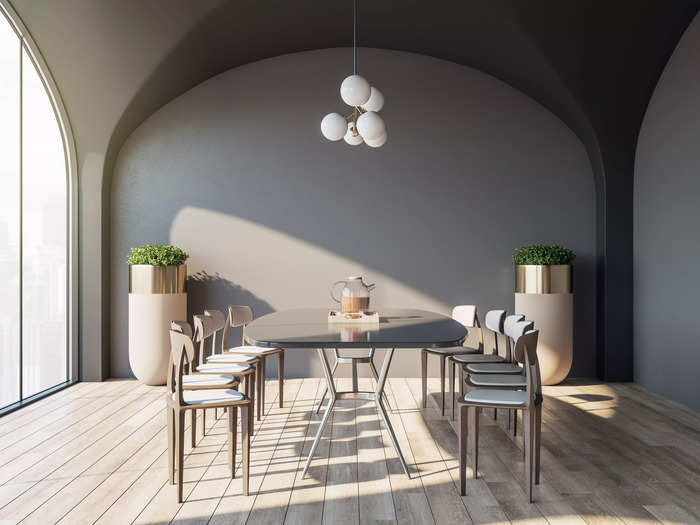
The days of painting your walls a bold color and leaving the ceiling white are over.
When it comes to creating a seamless, cohesive look, painting your walls and ceiling the same color is the way to go.
This design choice eliminates any harsh lines or color transitions, creating a sense of continuity and flow that reminds me of the way the sky and the horizon blend together. It can also make your room feel like it goes on forever.
Of course, choosing the right color is key. White is always a classic choice, but don't be afraid to experiment with other shades. Soft blues, greens, and grays can also work wonders and create a serene, calming atmosphere.
When it comes to creating a spacious and inviting room, less is definitely more.
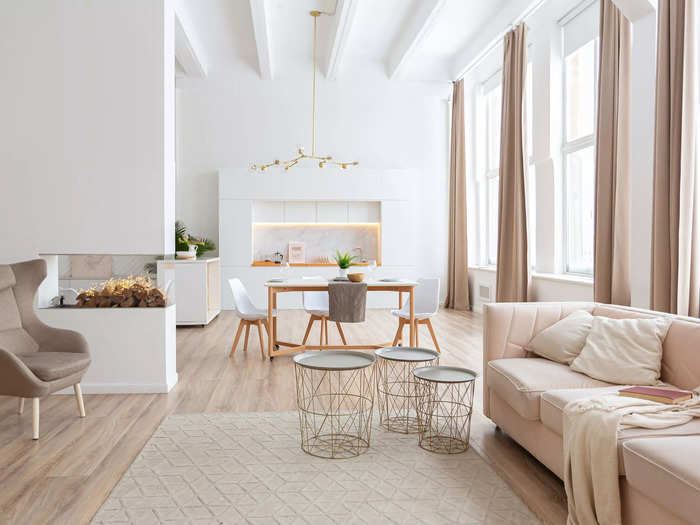
If you find yourself hoarding nicknacks, it's time to declutter.
Every item in your room takes up space. The more stuff you have, the less free space you have to move around in.
Letting go of clutter is the first step to creating a room that feels more open and spacious. By only keeping the essentials, you'll have more breathing room and allow your space to shine.
I recommend combing through your decor with a fine toothcomb and critical eye, keeping only your most prized possessions.
Play around with multiple light sources to brighten your home and make it feel more expansive.
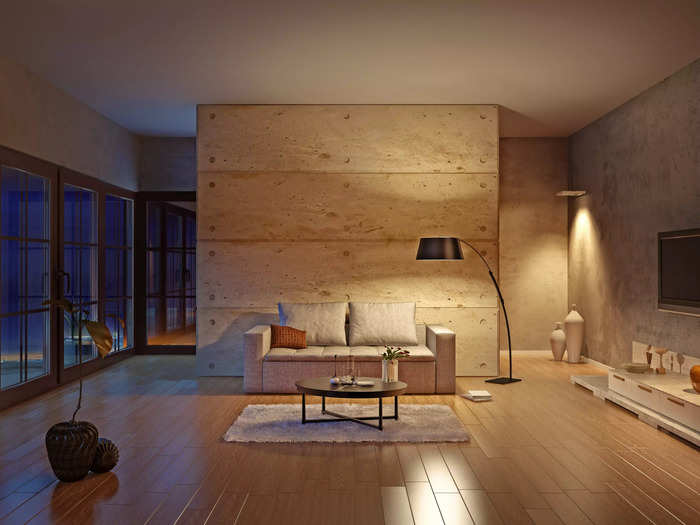
The secret to crafting a space that feels open and expansive is thinking about lighting in three tiers: ambient, task, and accent.
Ambient lighting provides overall illumination, task lighting focuses on specific areas, like a reading nook or desk, and accent lighting highlights architectural features or artwork.
Incorporating all three tiers of lighting into a space brings a sense of height and dimension that makes any room feel larger. It's an easy, cost-effective way to add some drama to your space.
Popular Right Now
Popular Keywords
Advertisement